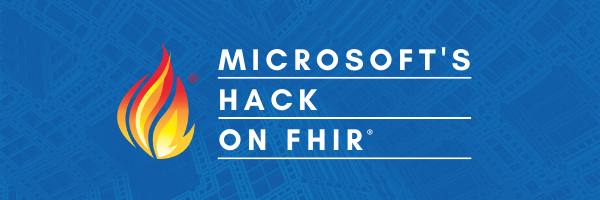
Next week, developers working with health data are gathering at the FHIR Dev Days conference, June 15-18, 2020, and Microsoft is pleased to host the “Hack on FHIR.” Get coding time, explore the FHIR spec, and learn the platforms helping organizations innovate using technology that removes barriers to interoperability.
In the world of technology, new inventions and ideas are introduced daily. It’s become common to brand a new technology platform as one that will “revolutionize” or “transform" the world as we know it. But in most cases, the true test of new technology is far more than slogans or hype, it’s how that tech stands up in a crisis or an emergency.
The concept of FHIR was published in a blog by Grahame Grieve in 2011, but in the last few years, HL7 FHIR has gained significant attention as the “new” standard for health data exchange. FHIR has continued to gain significant media call-outs as the “future of interoperability for health data,” and has become a regulatory requirement in the United States, with the U.S. Office of the National Coordinator for Health IT requiring the use of FHIR for data exchange beginning in December 2020. But this year, the world faced a true health emergency, and it became a test for FHIR. The novel coronavirus (COVID-19) pandemic challenged our regionalized health systems at an unprecedented scale. Physicians could no longer treat patients simply with the information presented in the exam room, but instead needed to combine inputs from multiple sources to understand how and why the virus was spreading and how it could possibly be treated.
In the last five months, FHIR has truly taken center stage in health data to transform the world of health interoperability. Health organizations using FHIR and cloud technology are leading this wave of change. New product introductions like FHIR converters and tools for anonymization are empowering developers to transform legacy data sets like HL7 Version 2 and C-CDA into FHIR and allowing for exchange of data in de-identified states for research. These new tools and converters are showing us the power of FHIR to scale and transform the way we work with health data. Developers are implementing FHIR at the foundation of solutions and cloud-based platforms for data agility. And most importantly, FHIR is accelerating operational efficiency, reducing the time needed to apply analytics and visualization, and enabling insights to better patient outcomes.
In the near term, FHIR is at the center of discussions for “post-COVID” models of care:
- How can FHIR be implemented to make remote patient monitoring or telehealth scenarios easier to implement?
- Can we use the mobile capabilities of SMART on FHIR to manage data and scale the delivery of care in remote locations that lack healthcare facilities?
- What is the best way to implement FHIR for post-procedure follow ups, or in enabling real-time alerts based on risk assessment?
- Where can FHIR help when working with data sets beyond clinical data, such as medical devices and social determinants of health?
Whatever question you choose to answer, FHIR can serve as the underlying foundation for data exchange and enable you to rapidly expand into new areas. Microsoft has invested in building FHIR technologies into the core of our cloud solutions and architectures, and we are active in releasing Open Source Software to further the ecosystem of FHIR.
Whatever stage you are at with FHIR – come join us! The FHIR community is founded on openness – in thought leadership, standards, and community. We care about learning and innovation to improve the health data ecosystem, and we want everyone to contribute. FHIR Dev Days and the Microsoft Hack on FHIR are virtual this year, which means you can participate from anywhere! Come join us to help make a difference in addressing today’s healthcare challenges. We look forward to joining with you to help make a positive impact!
Sign up for FHIR DevDays Today!


